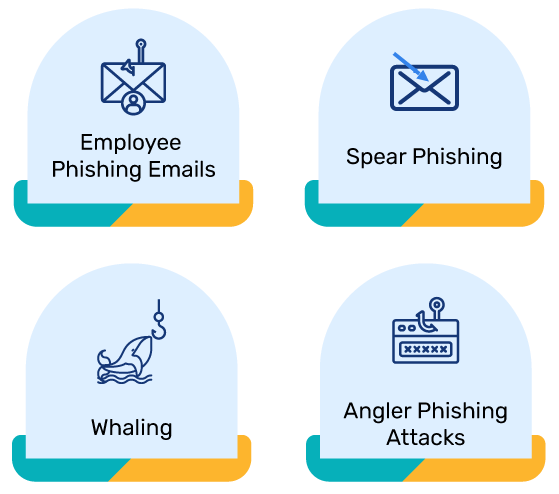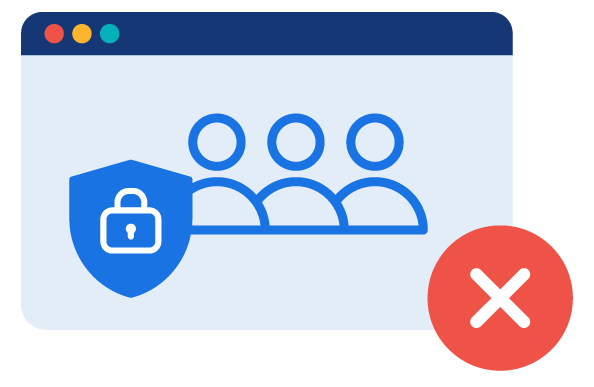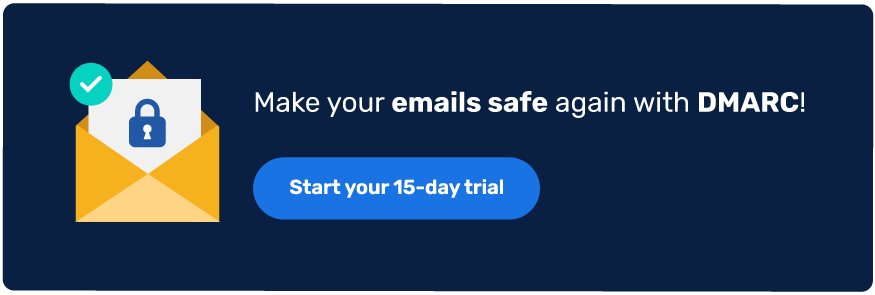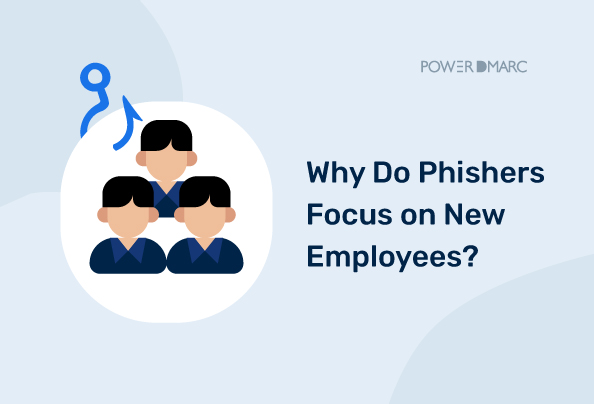Over the years, technology has become more assertive in every domain. Technological advancements have also enabled cybercriminals to discover innovative ways to steal information.
Usually, larger companies with thousands of employees are targeted. However, this doesn’t pardon smaller businesses from the line of fire. Lack of proper cybersecurity measures makes it easier for the phishers to find the weakest spot, usually a new employee.
It has been recorded that one out of every four employees admits to clicking the links attached to phishing emails.
Therefore, organizations need to devise and implement strategies to prevent phishing attacks. Thorough employee training and awareness of cybercrimes are also required. This article aims to familiarize you with employee phishing scams, their types, and ways to tackle them.
Key Takeaways
- Cybercriminals increasingly target both large corporations and small businesses through phishing attacks.
- New employees are particularly vulnerable due to their lack of familiarity with company protocols and cybersecurity best practices.
- Phishing attacks often involve personalized messages that attempt to evade suspicion and manipulate the recipient into disclosing sensitive information.
- Regular employee training and awareness programs are essential for equipping workers with the skills to recognize and respond to phishing threats.
- Implementing robust email security measures, including SPF, DKIM, and DMARC, can significantly reduce the risk of successful phishing attempts against a company.
Understanding Phishing
Phishing is a type of cyberattack in which scammers trick people into giving away vital information through fake emails and links. The information varies widely depending on the phisher’s target and is usually sensitive in nature.
Information usually contains login details, account information, passwords, and banking credentials, etc. A successful phishing attack is capable of causing large-scale losses for a company. It doesn’t only breach sensitive information but can also defame the company by using their confidential information.
Simplify Security with PowerDMARC!
4 Common Phishing Attacks Targeting New Employees
Most phishing attacks targeting employees are based on personalized messages. The message content is formatted in a way that may appear relatable to the user, to avoid suspicion.
Over time, attackers have modified traditional phishing habits. Therefore, updating employees’ knowledge about the types of phishing attacks is mandatory. It will help them recognize an attack promptly. Some common phishing attacks targeting employed are given below.

1. Employee Phishing Emails
It’s the most common phishing attack and the most convenient way to scam new employees. These types of attacks are spread through emails. The attacker creates an email impersonating the parent company of the employee with an attempt at stealing sensitive information.
AI has dramatically influenced such phishing attacks by helping attackers generate high quality phishing emails without identifiable errors.
2. Spear Phishing
Spear Phishing is a highly targeted form of phishing attack. They have a specific aim behind targeting that employee. After gathering background information about that user, a personalized email is crafted and sent. This email impersonates a legitimate source that the victim recognizes instantly.
In spear phishing, the malicious email usually starts with the recipient’s name instead of a general greeting. The attacker usually adds the employee’s work or account details and asks him to log into the account to act.
3. Whaling
Whaling occurs in the same way as phishing. In this case, the attackers target high-profile workers like C-suite executives. Like other phishing attacks, it also uses a malicious email or a message containing some sense of urgency.
It involves impersonation of these high-level executives, usually urging victims to open an attachment linked to a malicious email or share sensitive data. Once the target information is gathered, it can be used to exploit the company’s data.
4. Angler Phishing Attacks
This is a relatively new type of phishing attack. Angler phishing uses social media or a website to spread malware. Employees are persuaded to open a specific URL or a tweet. The website may ask new employees to enter the login details to perform their desired function, resulting in a data breach.
In addition, in this type, phishers also use the data posted by employees on their social media accounts to create highly targeted attacks.
Why Are The New Hires Easy Targets?
Here are several reasons explaining why phishers find new employees easy to target.
Lack of Familiarity with Company Protocols
Usually, onboarding new employees involves ensuring they become familiar with company policies and security best practices.
They also must realize the type of company information that is 100% confidential and mustn’t be disclosed under any circumstances. New employees also sometimes need help recognizing authentic and fake company email addresses.
Limited Knowledge of Cybersecurity Best Practices
New-on-the-field employees usually need more knowledge about cyber threats. They are unaware of vulnerabilities and loose ends, which can make them easily scammed. Even if they know about phishing attacks, they wouldn’t know the potential solutions and prevention strategies.
Increased Willingness to Prove Themselves
New employees have a great passion for proving themselves at their new workplace. They are quick to act on instructions and follow directions blindly without verification. They try to stay active and respond to all emails sent by the company officials efficiently. Phishers use this sense of urgency to lure them into phishing attacks.
How Organizations Fail Employee Cybersecurity
Organizational inefficiencies also play a significant role in their employees getting scammed.

Insufficient Training Programs
Cybersecurity training and awareness must be provided to employees at the start of their jobs. The organization must arrange for such internal training sessions. They should make the entire workforce aware of potential threats and their solutions. Creating a culture of appreciation through employee rewards and recognition, such as customizable awards or tailored recognition plaques can help motivate employees to actively engage in cybersecurity training and stay vigilant against potential threats.
Reliance on Email Communication
Email has been the primary source of communication among employees for ages. Since email is also the biggest target of phishers, companies may consider switching to personalized team communication platforms like Discord, Slack or Microsoft Teams for daily communication among employees. While emails can be reserved for specific scenarios and client communications.
Lack of Email Security
Organizations often overlook email security best practices like authentication with SPF, DKIM, and DMARC. This leaves their domains vulnerable to impersonation, phishing, and spoofing attacks. This also makes it easy to send fake emails to new employees from spoofed company domains.
Lack of Compliance Enforcement
Simply configuring email authentication protocols is not enough! Unless organizations enforce their DMARC policies, their domains remain vulnerable to email-borne threats.
In order to safely transition from a no-action to an enforced DMARC policy, sign up with PowerDMARC.
Importance of Employee Awareness & Training
Employee awareness trainings are more than just a formality. PowerDMARC’s free email security training courses have helped thousands of candidates including our own employees stay vigilant and aware in the face of email threats.
Additionally, new employees can use some of the following tips and strategies to avoid phishing attacks.
- Stay informed about phishing attacks, attend security training sessions, and learn about the latest trends in cybersecurity, such as AI and Quantum Computing.
- Vigilantly focus on the legitimacy of email accounts and the attached links. Avoid emails that use a sense of urgency or ask for urgent action.
- Keep all the software and security tools updated and virus-free—update systems with anti-virus, anti-malware, and firewall software.
- Move your cursor over the attached link and read the context carefully to avoid suspicious emails. If you suspect the email’s authenticity, contact the sender and confirm with them through any other platform.
- Secure your email domains using advanced email authentication protocols like SPF, DMARC, and DKIM.
Summing It Up
For every company, employees are an essential source of defense against data breaches. Yet, malicious emails still find their way to employee inboxes even after various security protocols.
Therefore, the only thing that can prevent organizations from being attacked is to set up preventive measures and choose the right security service providers. PowerDMARC has helped organizations of all sizes align their domain security needs and achieve compliance without negative implications on email deliverability. To enhance your domain security, you can contact us today!

- Top 7 Best Email Verification Tools for Secure Delivery - November 28, 2025
- CNAME vs A Record: Which DNS Record Should You Use? - November 18, 2025
- DMARC MSP Case Study: How PowerDMARC Secures Amalfi Technology Consulting Client Domains from Spoofing - November 17, 2025



